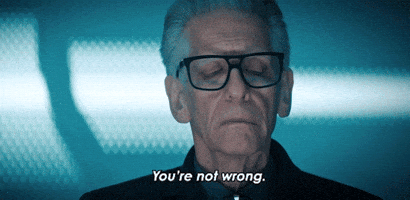Russia creating a Putin Youth basically
At age 25, Maryana Naumova is one of the freshest faces of Russian President Vladimir Putin’s wartime propaganda machine.
She has a show on the flagship Kremlin-controlled television network Channel One, 85,000 subscribers on Telegram, the messaging app that is now the main news platform for Russian speakers worldwide, and is a regular speaker at youth forums, universities and talk shows across the country.
Formerly a child-prodigy powerlifter with little experience in journalism, Naumova has reported from most of the major battles of the war in Ukraine — including, most recently, Kyiv’s incursion into Russia’s Kursk region, as well as from Mariupol and Bakhmut, two Ukrainian cities that Russian forces nearly demolished and then seized. Her dispatches have focused not on Russia’s military as an invading force but as liberators of Russian speakers in eastern Ukraine.
“We showed everything as it was,” Naumova said in an interview with The Washington Post about her coverage of Russia’s siege of Mariupol, in which she claimed without evidence that Ukrainian forces attacked civilians. “It was very strange that the state of Ukraine shelled its own citizens,” she said. “I felt such dissonance. It was incomprehensible to me. … I mean … they call them their people.”
Naumova is one of thousands of young Russians who have inserted themselves into their country’s new wartime system, adopting Kremlin spin as their own beliefs and ensuring that Putin’s core ideology, of ultranationalist patriotism and Orthodox Christian values, will be carried forward by a new generation. This includes the idea that the United States wants to destroy Russia and that Russia is a peace-seeking victim rather than an aggressor. Like Naumova, they see themselves as patriotic truth-tellers, not instruments of spin.
About 7 in 10 Russians between ages 18 and 24 — 69 percent — support Russia’s war in Ukraine, according to
an August poll conducted by the Levada Center, an independent polling group; at the same time, nearly as many — 67 percent — say they are not following the war closely or at all. But 66 percent of young Russians also support moving toward peace talks, according to the poll — a higher proportion than the overall population, of whom only 50 percent support moving toward such talks.
Since Putin ordered tanks with the letter Z scrawled across them into Ukraine in February 2022, the Kremlin has drastically expanded its focus on youth — introducing militaristic programs in schools and unleashing a barrage of hyper-patriotic messaging. While thousands of young people have left Russia, those who remain are part of a new generation that is redefining what it means to be Russian and will shape the nation’s outlook for decades. As much as any seizure of Ukrainian territory, experts say, this will be a tangible legacy of Russia’s war.


